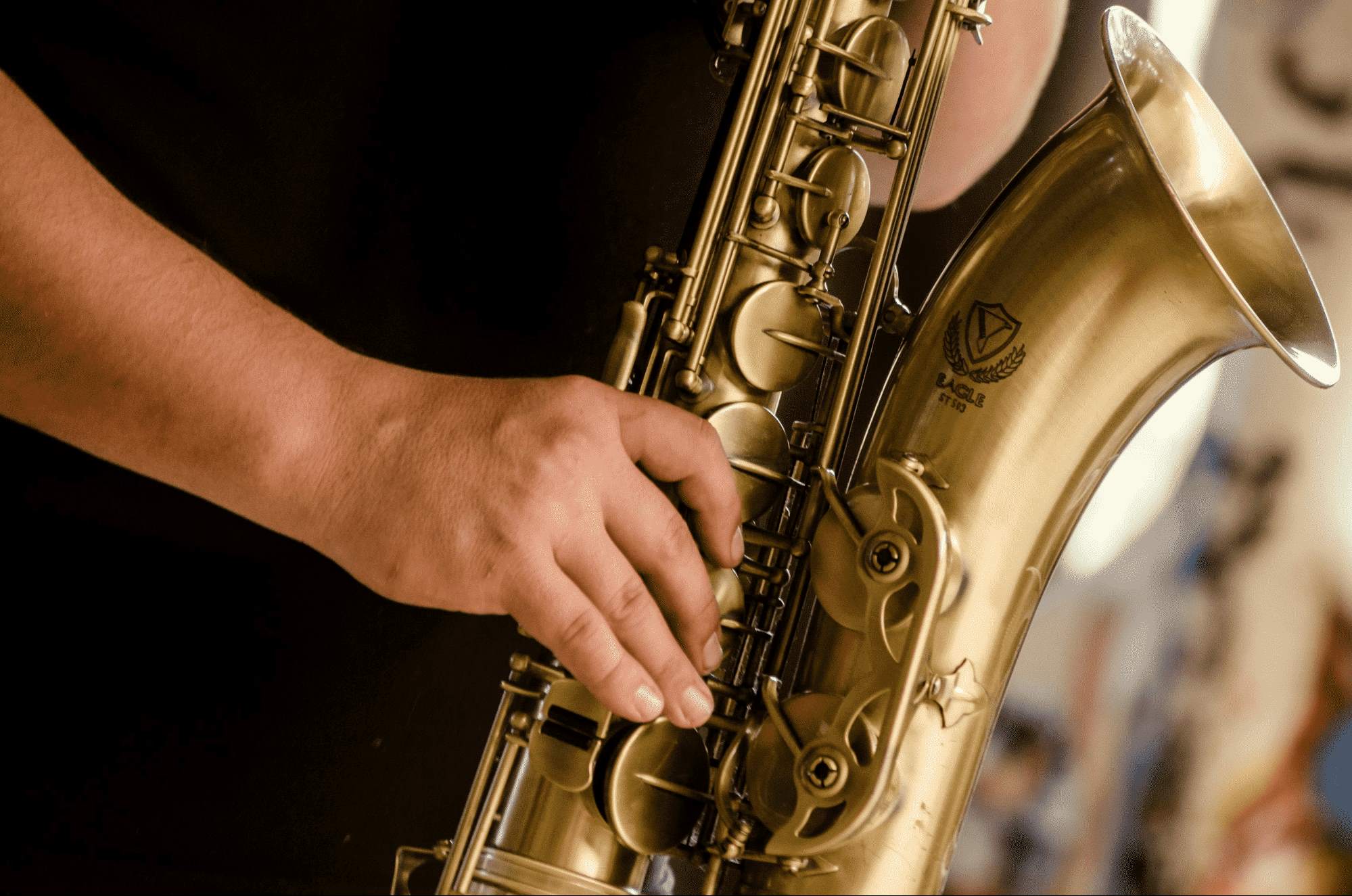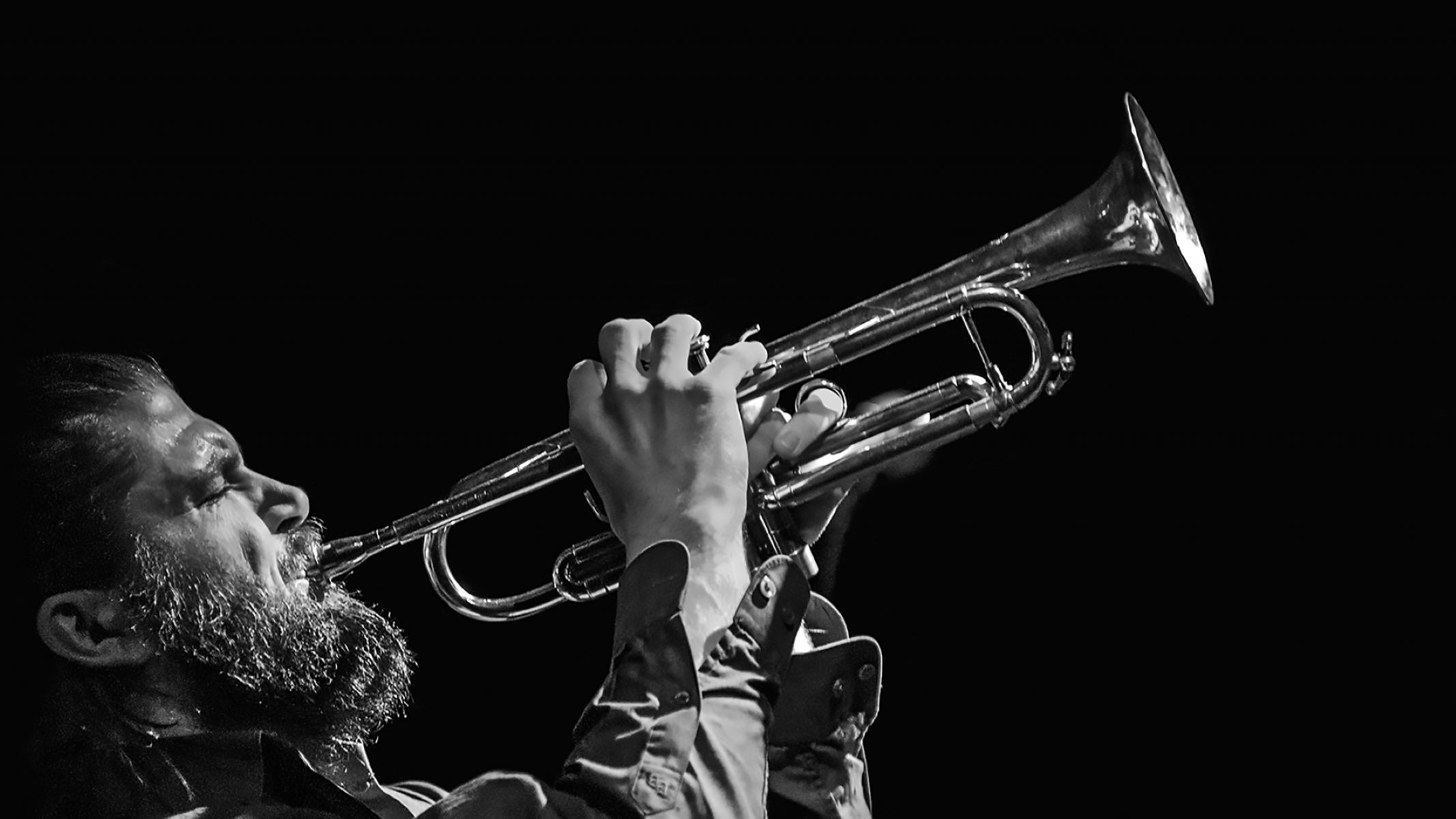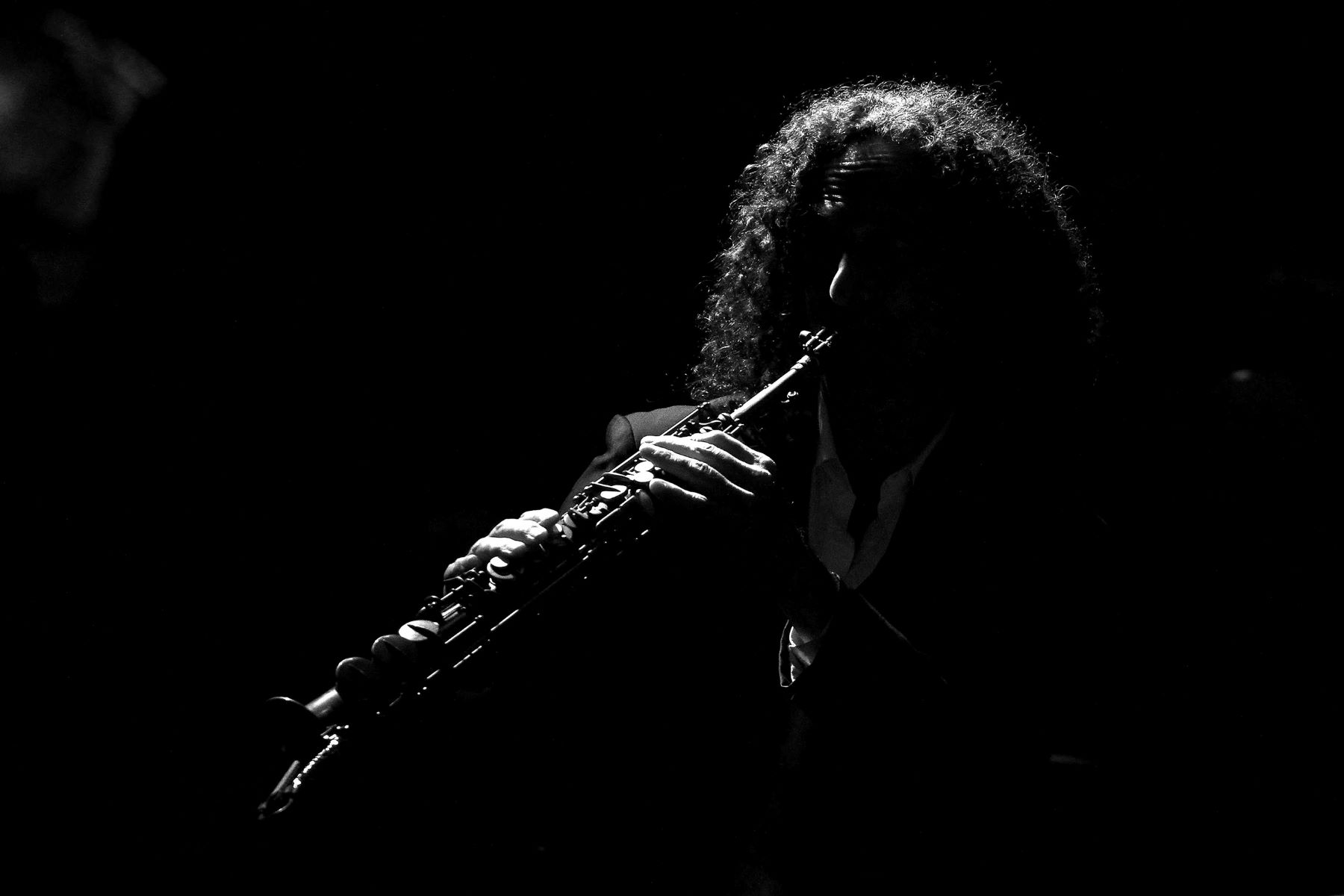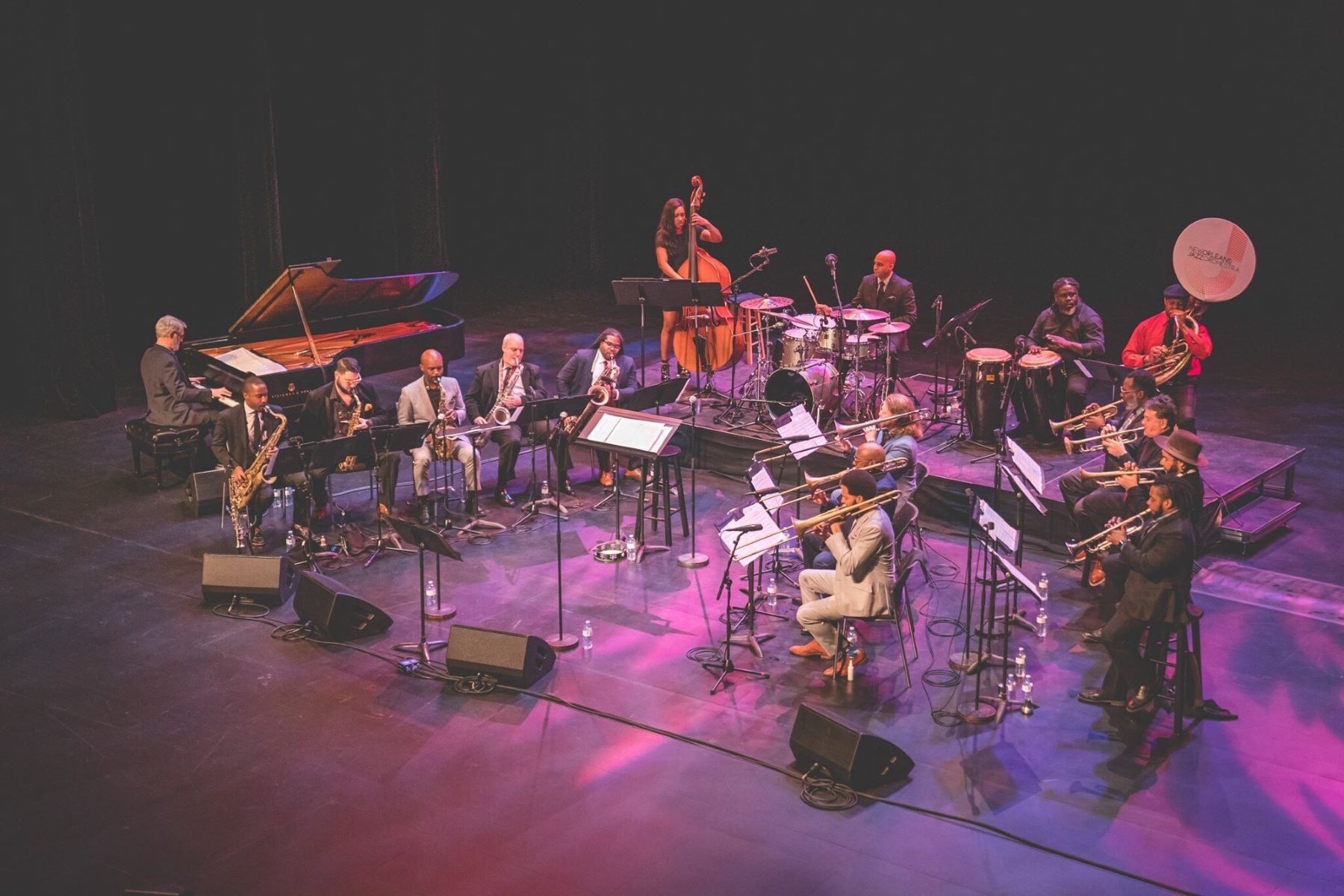Home>Genres>Jazz>What Style Of Jazz Did Dizzy Gillespie Play
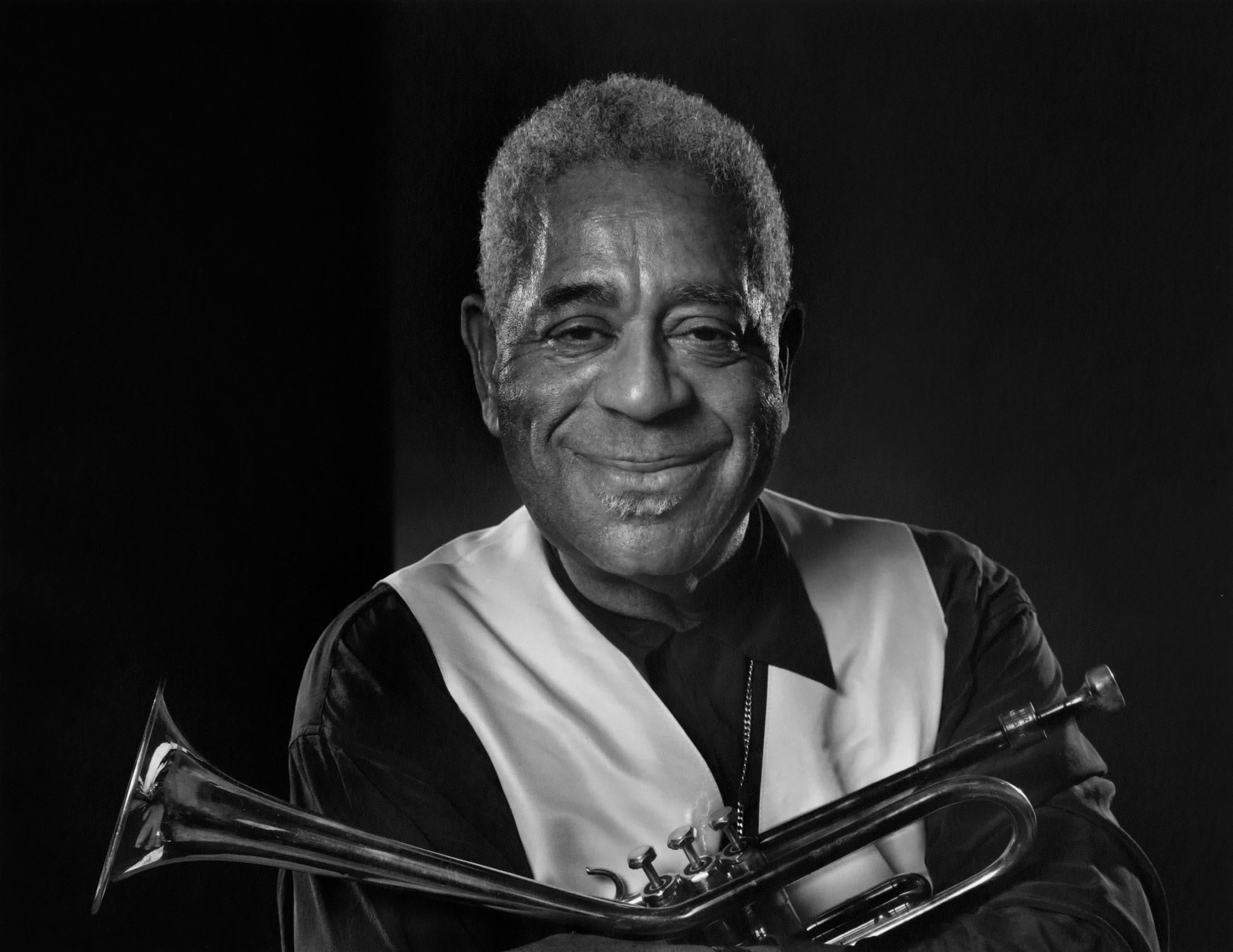

Jazz
What Style Of Jazz Did Dizzy Gillespie Play
Modified: February 24, 2024
Discover the iconic jazz style of Dizzy Gillespie, the legendary trumpeter and composer known for his contributions to bebop and Afro-Cuban jazz.
(Many of the links in this article redirect to a specific reviewed product. Your purchase of these products through affiliate links helps to generate commission for AudioLover.com, at no extra cost. Learn more)
Table of Contents
Introduction
Jazz, a genre characterized by its improvisation, syncopation, and rich harmonic structures, has seen the rise of many influential musicians over the years. One of the most prolific and innovative figures in jazz history is Dizzy Gillespie. With his virtuosic trumpet playing, unique artistic vision, and charismatic persona, Gillespie became one of the leading figures in the development of jazz from the 1940s onwards.
Born in 1917 in Cheraw, South Carolina, John Birks Gillespie, known as Dizzy, began his musical journey at a young age. His passion for music, particularly the trumpet, led him to pursue formal musical education at the Laurinburg Institute in North Carolina. It was during this time that Gillespie honed his skills and embarked on a lifelong commitment to jazz.
Gillespie’s early musical influences encompassed a wide variety of styles, including the swing era bands of Duke Ellington and Count Basie, as well as the innovative trumpet playing of Roy Eldridge. These influences shaped Gillespie’s sound and laid the foundation for his future endeavors.
However, it was Gillespie’s pivotal role in the bebop revolution that truly defined his legacy in jazz. Alongside musicians like Charlie Parker and Thelonious Monk, Gillespie pioneered a new approach to jazz, characterized by complex harmony, rapid tempos, and intricate melodic lines. Bebop challenged the conventions of swing and introduced a level of musicianship and improvisation that pushed the boundaries of jazz.
Gillespie’s contribution to jazz extended beyond the realms of bebop. He also played a significant role in the development of Afro-Cuban jazz fusion, incorporating elements of Latin music into his compositions and performances. This fusion resulted in a vibrant and rhythmic style that captivated audiences and opened up new avenues for exploration within the jazz genre.
In addition to his innovative solo work, Gillespie was known for his involvement in big band and orchestra projects. He led his own big bands, showcasing his skills as a bandleader and arranger. His compositions for large ensembles combined the intricacy of bebop with the grandeur of orchestral elements, creating a unique and dynamic sound.
Today, Dizzy Gillespie’s influence on jazz remains undeniable. His groundbreaking contributions to bebop, his foray into Latin influences, and his exploration of multiple musical styles continue to inspire and shape the direction of jazz. Gillespie’s virtuosity, musical vision, and charismatic stage presence solidify his place as one of the greatest jazz musicians of all time.
Early Life and Influences
Dizzy Gillespie was born on October 21, 1917, in Cheraw, South Carolina. From an early age, he displayed a natural affinity for music, and the trumpet quickly became his instrument of choice. Gillespie’s musical talents were nurtured by his father, a bandleader and amateur musician, who introduced him to the vibrant sounds of jazz.
Growing up in a predominantly African American community, Gillespie was exposed to a rich cultural heritage that greatly influenced his musical development. He absorbed the rhythms, melodies, and emotions of spirituals, gospel music, and the blues, which would later find their way into his own compositions and performances.
At the age of twelve, Gillespie’s family moved to Philadelphia, where he continued to immerse himself in the city’s thriving jazz scene. He sought guidance and inspiration from local musicians, attending jam sessions and absorbing the sounds of the swing era. Gillespie’s early influences included the trumpeters Roy Eldridge and Louis Armstrong, who left an indelible mark on his style and approach to the instrument.
In 1935, Gillespie began his formal musical education at the Laurinburg Institute in North Carolina. The institute provided him with a structured curriculum, allowing him to refine his technical skills and delve deeper into the theory and history of music. It was during this time that Gillespie made notable strides in his trumpet playing, honing his technique and developing a distinctive sound.
After leaving the institute, Gillespie returned to Philadelphia and immersed himself in the city’s vibrant jazz community. He began playing with notable musicians such as Teddy Hill, Charlie Shavers, and Billy Eckstine, further expanding his musical horizons and refining his improvisational abilities.
Gillespie’s early influences were not limited to trumpet players. He drew inspiration from the piano playing of Art Tatum and the arrangements of Duke Ellington and Count Basie. Gillespie was captivated by the virtuosity displayed by these musicians, and their innovative approaches to harmony and rhythm greatly influenced his own musical development.
By the late 1930s, Gillespie’s unique playing style and inventive improvisations caught the attention of jazz enthusiasts and fellow musicians alike. Gillespie’s blend of technical skill, emotional depth, and a fearless approach to experimentation set him apart from his peers and established him as a rising star in the jazz world.
Throughout his life, Dizzy Gillespie cited a wide range of influences that contributed to his distinctive sound. From the blues and spirituals of his childhood to the groundbreaking musicians of the swing era and beyond, Gillespie absorbed a diverse array of musical styles and seamlessly integrated them into his playing and compositions. These early influences laid the foundation for his revolutionary contributions to jazz and established him as an innovative force in the genre.
Bebop Revolution
The 1940s witnessed a major shift in the jazz landscape with the emergence of the bebop movement, spearheaded by Dizzy Gillespie, Charlie Parker, and other pioneering musicians. Bebop was a response to the commercialized swing music of the time, offering a more intellectual and virtuosic approach to jazz improvisation. Gillespie’s innovative trumpet playing and unique approach to composition played a critical role in shaping this revolutionary movement.
Bebop challenged the conventions of swing by introducing complex harmonies, rapid tempos, and intricate melodic lines. It demanded a higher level of musicianship and improvisation from both the performers and the audience. Gillespie’s virtuosity on the trumpet was unparalleled, with his rapid-fire technique, agile phrasing, and harmonic exploration captivating audiences and inspiring fellow musicians.
Gillespie’s contributions to the bebop movement were not restricted to his instrumental prowess. He was also a prolific composer, creating numerous bebop standards that are still performed and loved today. One of his most famous compositions, “A Night in Tunisia,” exemplifies the essence of bebop with its complex chord progressions and intricate melodies, showcasing Gillespie’s mastery of the genre.
Alongside his musical collaborations with Charlie Parker, Gillespie formed a close partnership with fellow trumpeter and friend, Roy Eldridge. Eldridge’s fiery style and swing sensibility influenced Gillespie’s playing, and the two would engage in friendly musical battles, pushing each other to new heights of improvisation. Their collaboration exemplified the spirit of the bebop revolution – a quest for musical freedom, innovation, and artistic expression.
Bebop revolutionized the jazz landscape, redefining the possibilities of improvisation and composition. It provided a platform for individual expression and the development of unique musical voices. Gillespie’s contributions to this movement ensured his lasting legacy in the history of jazz, as he helped pioneer a new era of musical exploration and elevated the role of the trumpet in jazz.
While the bebop movement faced initial resistance from some segments of the jazz community and the broader public, it had a lasting impact on the development of jazz. Bebop pushed the boundaries of what was considered acceptable in jazz, paving the way for subsequent movements and styles and inspiring generations of musicians to come.
Afro-Cuban Jazz Fusion
In addition to his pivotal role in the bebop revolution, Dizzy Gillespie also played a significant role in the development of Afro-Cuban jazz fusion. Inspired by the rhythms and melodies of Latin music, Gillespie incorporated these elements into his compositions and performances, creating an exciting and vibrant fusion of jazz and Afro-Cuban influences.
Gillespie’s fascination with Latin music began in the 1940s when he heard the Cuban singer and bandleader Machito perform in New York City. He was captivated by the fiery rhythms and colorful melodies and became determined to explore the possibilities of fusing these Latin sounds with jazz.
This exploration led to Gillespie’s groundbreaking collaboration with Cuban percussionist Chano Pozo. Together, they created a new sound that melded Gillespie’s virtuosic trumpet playing with Pozo’s dynamic conga rhythms. This fusion resulted in compositions such as “Manteca” and “Cubana Be, Cubana Bop,” which showcased the exhilarating blend of jazz improvisation and Afro-Cuban grooves.
Gillespie’s Afro-Cuban jazz fusion also incorporated elements of mambo and other Latin dance styles. He worked closely with Cuban arranger and composer Mario Bauza to create big band arrangements that featured bold brass sections, intricate percussion patterns, and infectious rhythmic motifs. These compositions, including “Tin Tin Deo” and “Con Alma,” displayed Gillespie’s innovative approach to merging the worlds of jazz and Latin music.
Through his Afro-Cuban collaborations, Gillespie not only introduced Latin rhythms and melodies to jazz but also helped to bring recognition to the rich musical traditions of Latin America. His embrace of Afro-Cuban influences paved the way for future musicians to explore this fusion and contributed to the broader popularization of Latin jazz.
Gillespie’s impact on Afro-Cuban jazz fusion extended beyond his own compositions and performances. He mentored and influenced a new generation of musicians who would go on to become leaders in the genre, such as trumpeter Arturo Sandoval and pianist Chucho Valdés.
Today, the legacy of Dizzy Gillespie’s Afro-Cuban jazz fusion can still be heard in the work of contemporary artists who continue to explore the intersection of jazz and Latin music. Gillespie’s groundbreaking fusion serves as a testament to the power of cross-cultural collaboration and the ability of music to transcend boundaries.
Cool Jazz Experimentation
In the 1950s, jazz underwent yet another transformation with the emergence of the cool jazz movement. In contrast to the rapid tempos and fiery improvisations of bebop, cool jazz embraced a more laid-back and introspective approach to the music. Dizzy Gillespie, known for his versatility and willingness to explore new sounds, played a pivotal role in the development of this subgenre through his experimentation and collaboration with other innovative musicians.
Gillespie’s foray into cool jazz experimentation was influenced by his exposure to the musical ideas of pianist and composer Gil Evans, as well as the collaborations he had with arranger and composer Gerry Mulligan. Together, they sought to create a new sound that incorporated elements of classical music, subdued dynamics, and intricate arrangements.
A notable example of Gillespie’s cool jazz experimentation is the album “Jazz Modern,” recorded in 1951. On this record, he explored new harmonic structures, intricate melodic lines, and unconventional instrumentations, such as the use of a French horn. The result was a collection of beautifully crafted compositions that showcased Gillespie’s creativity and willingness to push the boundaries of jazz.
Furthermore, Gillespie’s collaboration with arranger and conductor Quincy Jones on the album “The New Continent” in 1962 exemplified his ongoing commitment to cool jazz experimentation. Together, they blended elements of jazz and orchestration, creating a lush and textured sound that further expanded the possibilities of the genre.
What set Gillespie apart in his approach to cool jazz experimentation was his ability to maintain his distinct trumpet style while also incorporating the nuances and techniques of this new subgenre. His improvisations, though more introspective, continued to showcase his technical agility and virtuosity, solidifying his stature as one of jazz’s true innovators.
The influence of Gillespie’s cool jazz experimentation can be seen in the work of subsequent musicians and bands like the Modern Jazz Quartet, Chet Baker, and the Gil Evans Orchestra. These artists took the ideas and concepts pioneered by Gillespie and applied them in their own unique ways, further advancing the cool jazz movement.
While cool jazz experimentation may not have garnered the same level of mainstream recognition as bebop or Afro-Cuban jazz fusion, its impact on the evolution of jazz cannot be underestimated. Gillespie’s willingness to explore new sounds and embrace new ideas ultimately contributed to the diversity and richness of the jazz genre.
Big Band and Orchestra Works
While Dizzy Gillespie is often heralded for his groundbreaking contributions to bebop and Afro-Cuban jazz fusion, his involvement in big band and orchestra works should not be overlooked. Gillespie’s talents extended beyond his virtuosic trumpet playing and compositions for small ensembles. He showcased his skills as a bandleader, arranger, and composer in the realm of larger musical ensembles, leaving a significant impact on the world of big band jazz.
Gillespie’s big band works were characterized by their intricate arrangements, blending the elements of swing, bebop, and Latin rhythms. He formed his own big bands throughout his career, allowing him to experiment with different instrumentation, harmonic colors, and ensemble dynamics.
One of Gillespie’s iconic big band compositions is “Manteca.” Co-written with Chano Pozo and Gil Fuller, this groundbreaking piece embodies his fusion of bebop and Afro-Cuban influences. With its intoxicating rhythmic drive, stellar brass sections, and Gillepsie’s virtuosic trumpet solos, “Manteca” remains a staple in big band repertoire to this day.
Gillespie’s collaborations with arranger and composer Quincy Jones also produced notable big band works. They worked together on critically acclaimed albums such as “The New Continent,” which showcased their shared vision for incorporating orchestral elements into jazz. Their synergy resulted in lush and textured arrangements that enhanced the range and depth of Gillespie’s compositions.
Notably, Gillespie’s involvement in big band and orchestra works allowed him to collaborate with renowned artists from various musical backgrounds. He surrounded himself with talented musicians, providing them with opportunities to showcase their skills and express their artistic visions.
Gillespie’s ability to seamlessly blend different musical styles and genres within the context of larger ensembles set him apart as a visionary in the world of jazz. His big band compositions and arrangements pushed the boundaries of traditional jazz orchestra conventions, incorporating elements of the avant-garde, world music, and experimental harmonies.
Through his involvement in big band and orchestra works, Gillespie established himself as not only an exceptional trumpet player but also a master bandleader and arranger. His ability to bring together talented musicians and create dynamic and cohesive musical performances contributed to his imprint on the history of jazz.
The influence of Gillespie’s big band and orchestra works can be felt in contemporary jazz ensembles and composers who continue to explore the possibilities of larger musical ensembles. His legacy in this realm solidifies his status as one of the most influential figures in jazz history.
Legacy and Influence
Dizzy Gillespie’s impact on the world of jazz is immeasurable. His innovative spirit, virtuosic trumpet playing, and collaborations with some of the greatest musicians of his time have solidified his legacy as one of the most influential figures in jazz history.
Gillespie’s pioneering role in the bebop revolution, alongside Charlie Parker and others, forever changed the direction of jazz. His intricate melodies, complex harmonies, and lightning-fast improvisations pushed the boundaries of what was thought possible in the genre. Bebop revolutionized jazz, emphasizing individual expression and instrumental virtuosity, and Gillespie played an integral part in shaping its sound.
His fusion of jazz with Afro-Cuban rhythms and melodies opened up new avenues for exploration and helped popularize Latin jazz. Gillespie’s collaborations with prominent Cuban musicians, such as Chano Pozo and Mario Bauza, resulted in groundbreaking compositions that showcased the dynamic and vibrant fusion of these musical traditions.
Gillespie’s influence extended beyond his own musical contributions. His virtuosic trumpet playing and innovative approach to composition inspired countless musicians and became a benchmark for aspiring jazz artists. His charismatic stage presence and joyful personality made him a beloved figure among his peers and audiences worldwide.
Throughout his career, Gillespie mentored and supported young musicians, nurturing a new generation of jazz talent. His commitment to education and passing on the traditions of jazz ensured that his influence will continue to be felt through the generations.
Not only was Gillespie a remarkable performer and composer, but he also made significant contributions as a bandleader and arranger. His work with big bands and orchestras expanded the possibilities of jazz, incorporating elements from classical music and showcasing his skills as a visionary musical director.
Today, Gillespie’s influence can be heard in the work of a wide range of jazz artists. His innovative spirit and willingness to explore new sounds and styles have become a hallmark of the genre. Musicians continue to draw inspiration from his technical mastery, bold musical choices, and fearless approach to improvisation.
Gillespie’s impact goes beyond the realm of jazz. His embrace of different cultures, his dedication to promoting peace and understanding through music, and his role as a cultural ambassador has left a lasting impression on society. He broke down barriers and fostered a sense of unity through his music, transcending borders and bringing people together.
Dizzy Gillespie’s legacy lives on through his recordings, compositions, and the countless musicians he inspired. His contributions to jazz and his unwavering commitment to artistic exploration make him an enduring legend and a true icon of American music.


